
Plymouth Automobile History (1928-2001)
Plymouth was a marque of automobiles produced by the Chrysler Corporation and Production was discontinued on June 29, 2001 in the United States. The Plymouth automobile was introduced on July 7, 1928. It was Chrysler Corporation’s first entry in the low-priced field, which at the time was already dominated by Chevrolet and Ford. Plymouths were actually priced slightly higher than their competition, but offered all standard features such as internal expanding hydraulic brakes that the competition did not provide. Plymouths were originally sold exclusively through Chrysler dealerships.
The origins of Plymouth can be traced back to the Maxwell automobile. When Walter P. Chrysler took over control of the troubled Maxwell-Chalmers car company in the early 1920s, he inherited the Maxwell as part of the package. After he used the company’s facilities to help create and launch the Chrysler car in 1924, he decided to create a lower-priced companion car. So for 1926 the Maxwell was reworked and re-badged as the low-end Chrysler “52” model. In 1928, the “52” was once again redesigned to create the Chrysler-Plymouth Model Q. The “Chrysler” portion of the nameplate was dropped with the introduction of the Plymouth Model U in 1929.
While the original purpose of the Plymouth was to serve a lower-end marketing niche, during the Great Depression of the 1930s, the marque helped significantly in ensuring the survival of the Chrysler Corporation in a decade when many other car companies failed. Beginning in 1930, Plymouths were sold by all three Chrysler divisions (Chrysler, DeSoto, and Dodge).
Plymouth sales were a bright spot during this dismal automotive period, and by 1931 Plymouth rose to the number three spot among all cars. In 1931 with the Model PA, the company introduced floating power and boasted, “The economy of a four; the smoothness of a six.” In 1933 Chrysler decided to catch up with Ford and Chevrolet with respect to engine cylinder count. The 190 cu in version of Chrysler’s flathead-6 engine was equipped with a downdraft carburetor and installed in the new 1933 Plymouth PC, introduced on 17 November 1932. However, Chrysler had reduced the PC’s wheelbase from 112 in (284.5 cm) to 107 in (271.8 cm), and the car sold poorly. By April 1933, the Dodge division’s Model DP chassis, with a 112 in (284.5 cm) wheelbase, was put under the PC body with DP front fenders, hood, and radiator shell. The model designation was advanced to PD and the car was marketed as the “DeLuxe” 1933 Plymouth. This car sold very well and is the 1933 model most commonly found in collections. The PC became the ‘Standard Six’. It had been the ‘Plymouth Six’ at introduction, and was sold through to the end of 1933, but in much lower numbers. It is consequently in the minority in collectors’ hands today. In 1937, Plymouth (along with the other Chrysler makes) added safety features such as flat dash boards with recessed controls and the back of the front seat padded for the rear seat occupants.[2] The PC was shipped overseas to Sweden, Denmark, and the UK, as well as Australia. In the UK it was sold as a ‘Chrysler Kew’, Kew Gardens being the location of the Chrysler factory outside London. The flathead 6 which started with the 1933 Model PC stayed in the Plymouth until the 1959 models.
In 1939 Plymouth produced 417,528 vehicles. The 1939 convertible coupe was prominently featured at Chrysler’s exhibit at the 1939 New York World’s Fair, advertised as the first mass-production convertible with a power folding top. It featured a 201 cu in, 82 hp version of the flathead six engine. For much of its life, Plymouth was one of the top-selling American automobile brands. Plymouth almost surpassed Ford in 1940 and 1941 as the second most popular make of automobiles in the U.S. In 1954 Chyrsler started its decade long unsuccessful attempt to develop and market a viable car powered by turbine engine when it installed an experimental turbine they had developed specifically for vehicles in a Plymouth.
In 1957, Virgil Exner’s new Forward Look design theme, produced cars with much more advanced styling than Chevrolet or Ford. 1957 total production soared to 726,009, about 200,000 more than 1956, and the largest output yet for Plymouth. However, the 1957–1958 Forward Look models suffered from poor materials, spotty build quality and inadequate corrosion protection; they were rust-prone and greatly damaged Chrysler’s reputation.
Most Plymouth models offered from the late 1970s onward, such as the Volaré, Acclaim, Laser, Neon, and Breeze, were badge-engineered versions of Chrysler, Dodge, or Mitsubishi models. By the 1990s, Plymouth had lost much of its identity, as its models continued to overlap in features and prices with Dodges and Eagles. Plymouth’s product offerings and buyer appeal, and sales continued to fall.
By the late 1990s, only four vehicles were sold under the Plymouth name: the Voyager/Grand Voyager minivans, the Breeze mid-size sedan, the Neon compact car, and the Prowler sports car, which was to be the last model unique to Plymouth, though the Chrysler PT Cruiser was conceived as a concept unique to Plymouth before production commenced as a Chrysler model.
After discontinuing the Eagle brand in 1998, Chrysler was planning to expand the Plymouth line with a number of unique models before the corporation’s merger with Daimler-Benz AG. The first model was the Plymouth Prowler, a hot rod styled sports car. The PT Cruiser was to have been the second. Both models had similar front-end styling, suggesting Chrysler intended a retro styling theme for the Plymouth brand. At the time of Daimler’s takeover of Chrysler, Plymouth had no unique models besides the Prowler not also available in the Dodge or Chrysler lines.
From a peak production of 973,000 for the 1973 model year, Plymouth rarely exceeded 200,000 cars per year after 1990. Even the Voyager sales were usually less than 50% that of Dodge Caravan. In Canada, the Plymouth name was defunct at the end of the 1999 model year. Consequently, DaimlerChrysler decided to drop the make after a limited run of 2001 models. This was announced on November 3, 1999.
The last new model sold under the Plymouth marque was the second generation Neon for 2000–2001. The PT Cruiser was ultimately launched as a Chrysler, and the Prowler and Voyager were absorbed into that make as well. Following the 2001 model year, the Neon was sold only as a Dodge in the US, though it remained available as a Chrysler in Canadian and other markets. The Plymouth Breeze was dropped after 2000, before Chrysler introduced their redesigned 2001 Dodge Stratus and Chrysler Sebring sedan.
Timeline
1928
Chrysler Corporation creates a new division to compete with Chevrolet and Ford in the “entry-level” car market. The division’s name recalls Plymouth Rock and first Pilgrim colony; Mayflower ship is stamped on radiator.
First Plymouth is publicly shown at Madison Square Garden, offering many features of the more expensive Chrysler models, including available four-wheel hydraulic brakes and full-pressure engine lubrication.
1929
Chrysler completes the Detroit Lynch Road factory for Plymouth production, making it the largest auto assembly plant in the world at the time.
1931
Plymouth surpasses Buick to become the third best selling car in the nation in only its fourth year on the market.
1932
Plymouth PA Series makes its debut as the most advanced low price car with “Floating Power”, a new engine mounting system that substantially reduces the vibration of four-cylinder motors.
1932
Plymouth PB is the last four-cylinder model built.
1933
Six-cylinder PC is introduced via nationwide live radio program.
1934
Plymouth builds its one-millionth automobile, captures 25 percent of the low priced car market.
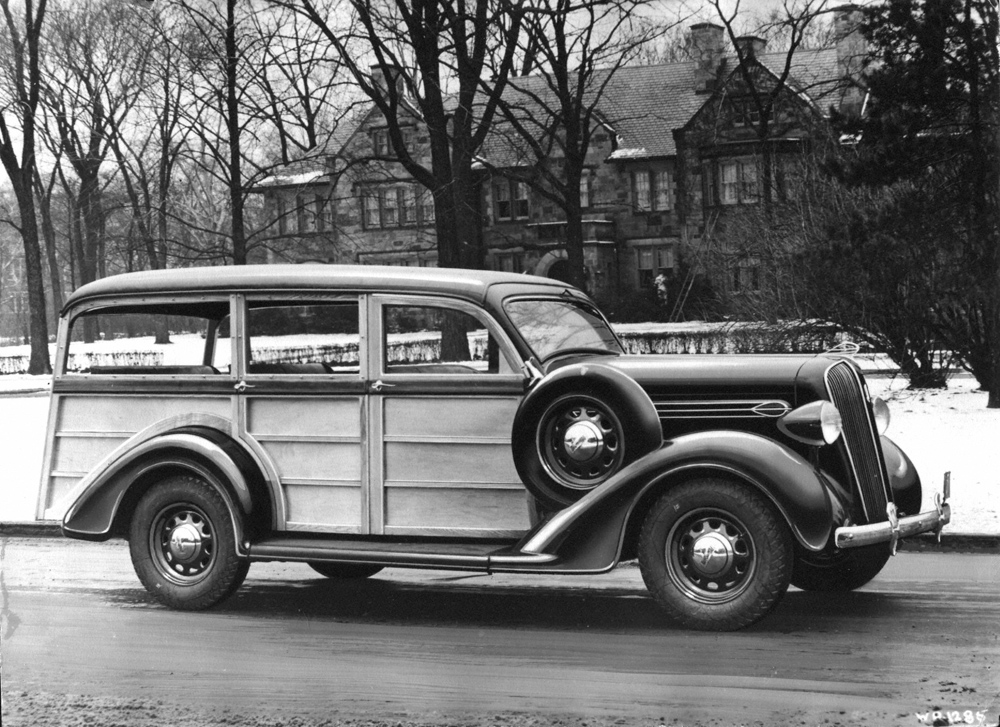
1939
Plymouth introduces the first power-operated convertible top in the U.S.
1941
Plymouth production reaches the four-million mark.
1942-1945
The war effort: Plymouth’s Evansville, Indiana plant makes bullets, shells, and other munitions. Plymouth’s Lynch Road plant in Detroit contributes to the Manhattan Project (A-bomb technology).
1949
Plymouth P-18 DeLuxe Suburban debuts as the first all-steel passenger car-based station wagon. Plymouth is the first low-priced car to offer turn-key ignition.
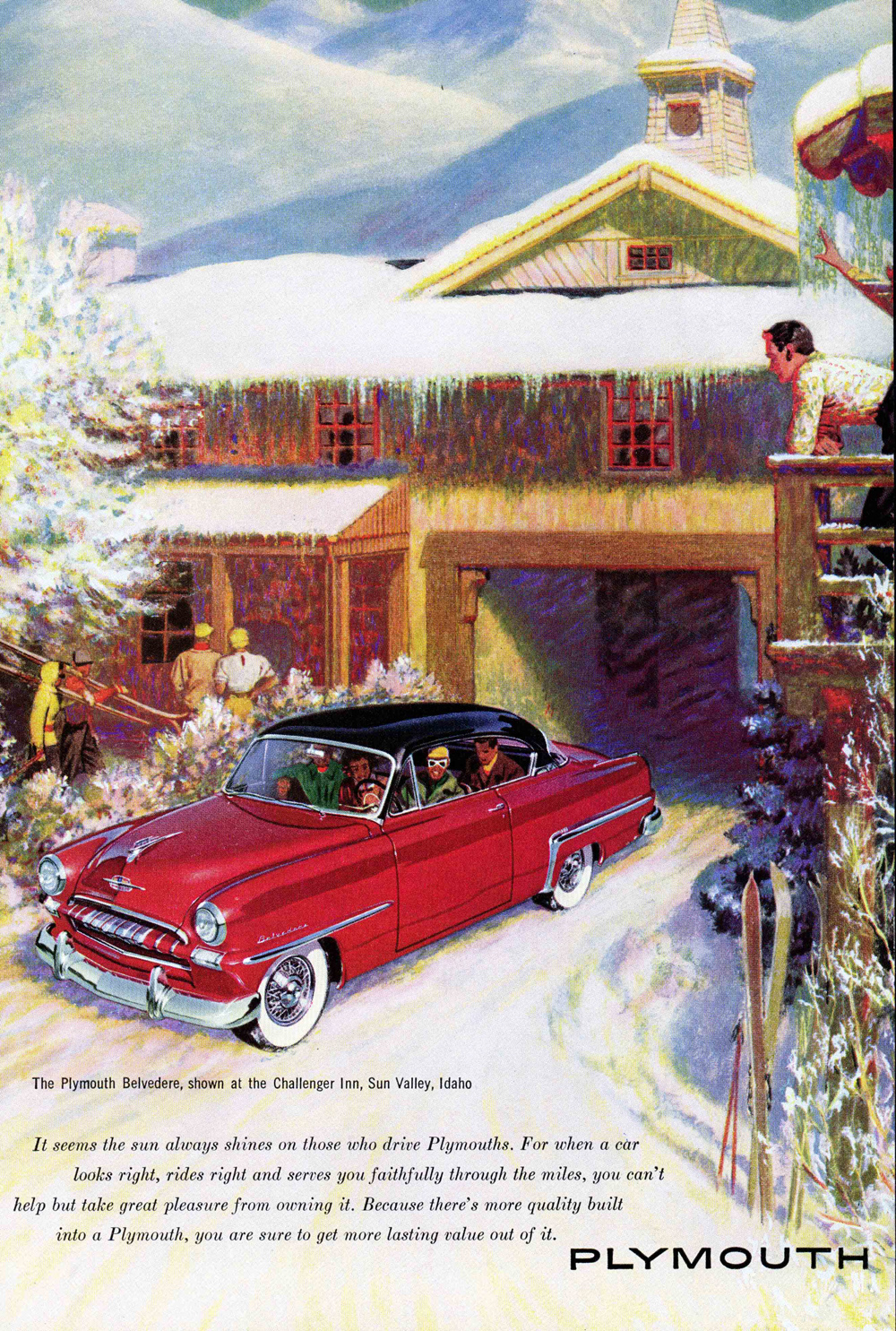
1954
Plymouth is the test platform for the first gas-turbine powered Chrysler car.


1955
First Plymouth V-8. First Virgil Exner-designed “Forward Look” Plymouth.
1956
Plymouth introduces the Plymouth Fury – one of the most celebrated Exner “Forward Look” cars.
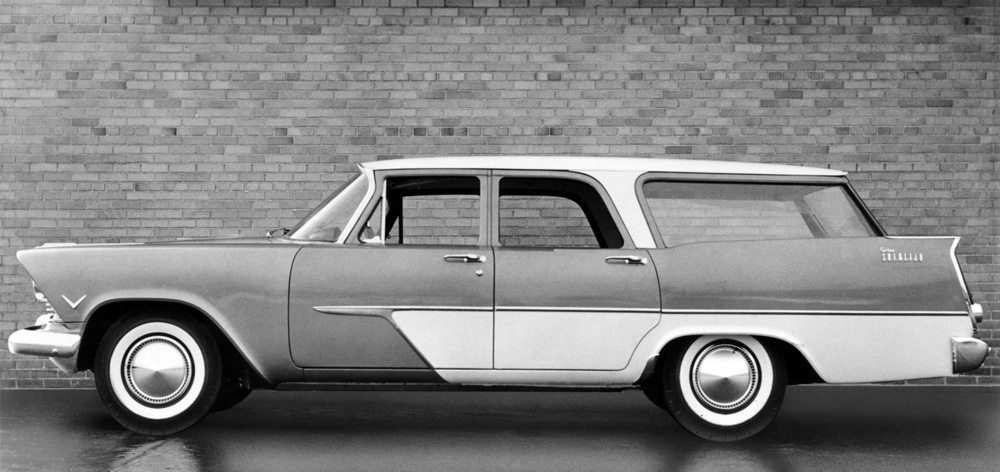
1957
In 1957 Plymouths were available in three series – Plaza, Savoy and Belvedere – with the limited production “muscle car” version – the Plymouth Fury – available mid-year. (No, it did not have a “Hemi.”)
Tulsa’s “buried” car is a 1957 Belvedere two-door hardtop equipped with a V-8 engine and Sportone trim (the tapering body side “color sweep”).
The car is painted Desert Gold with a Sand Dune White roof and color sweep.
The “buried” Belvedere is one of 71,939 Belvedere V-8 two-door hardtops built in 1957.
The buried car is actually a 1957 1/2 Plymouth because it has the revised mid-year grille. The area below the raised bumper bar – with the six wide vertical slots – was changed mid-year to add an additional vertical strip in each of the six slots to narrow the width and thus improve the appearance.
Given its abstract shape and gold finish, the ’57 version of Plymouth’s traditional Mayflower sailing ship logo that graced the grille and deck lid was referred to by the stylists as the “potato chip.”
The 1957 cars were known internally within Chrysler as the “K” series.
Plymouth production totaled 729,369 cars for the 1957 model run.
The runaway success of the ’57 Plymouth enabled Plymouth division to recapture third place in sales from Buick.
Chrysler Corporation vehicles in 1957 used about 100 pounds in weight-saving aluminum per vehicle versus a then-industry average of 45 pounds.
On April 19, 1957, Chrysler Corporation cars – including Plymouth – achieved an unprecedented clean sweep of the 1,568 mile Los Angles to Sun Valley Mobilgas Economy Run, winning in every class.
Chrysler Corporation Award for the “superior handling and roadability” of the innovative Torsion-Aire suspension.
In June, 1957, Virgil Exner’s design team received the Industrial Designers’ Institute Gold Medal Award for the design of the 1957 cars.
On July 25, 1957, Virgil Exner was made Chrysler’s first Vice President of Styling.
Plymouth regains third place position in industry sales with dramatic Exner ‘Flite-Sweep’ styling, the second generation ‘Forward Look’.
1959
The Valiant is introduced as a 1960 model. Under its skin are two Chrysler firsts – the legendary Slant Six engine and one of the most significant advances in automobile history – the electric alternator.
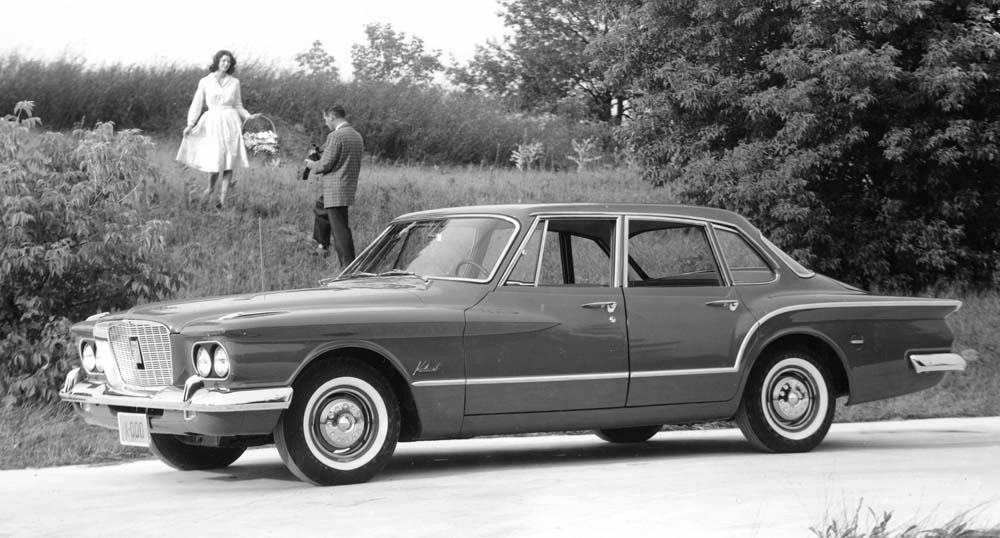
1964
Plymouth responds to the boom in the personal sporty car market with the Barracuda, a fastback version of the Valiant. Richard Petty leads a 1-2-3 Plymouth win at the NASCAR Daytona 500 in a Hemi-powered Fury.
1965
The Belvedere, Plymouth’s newest entry in the growing “intermediate-size” car market is introduced.
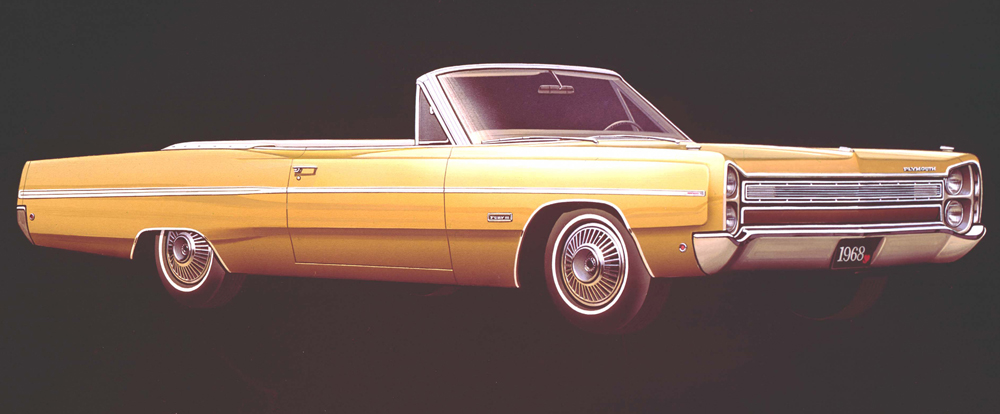
1968
Plymouth introduces the Road Runner – the brand’s muscle car icon – a powerful but “no frills” muscle car based on the Belvedere.

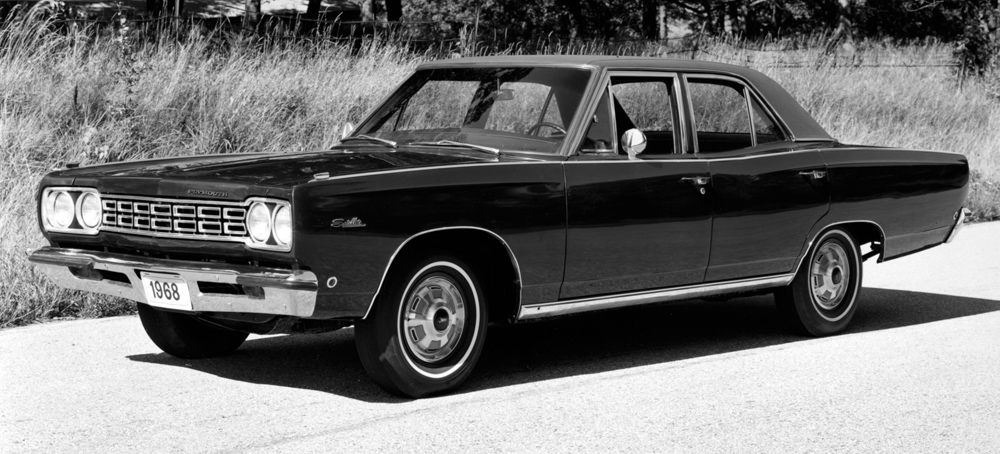
1970
Plymouth introduces the Superbird, an even more outlandish version of the Road Runner with a high rear wing and aerodynamic nose. More than 1,900 were built to qualify for NASCAR.
1973
The 1973 Plymouth Duster Coupe helps propel Plymouth to its greatest sales year ever.
1976
The all-new Volare compact introduced to replace the Valiant is named Motor Trend’s Car of the Year.
1978
The Plymouth Horizon and Dodge Omni are introduced as America’s first domestically-produced front-drive sub-compacts – and named Motor Trend’s Car of the Year.
1981
Plymouth introduces the Reliant, its version of the famed front-drive ‘K’ cars charged with helping Chrysler avert bankruptcy, which also wins the prestigious Car of the Year award.
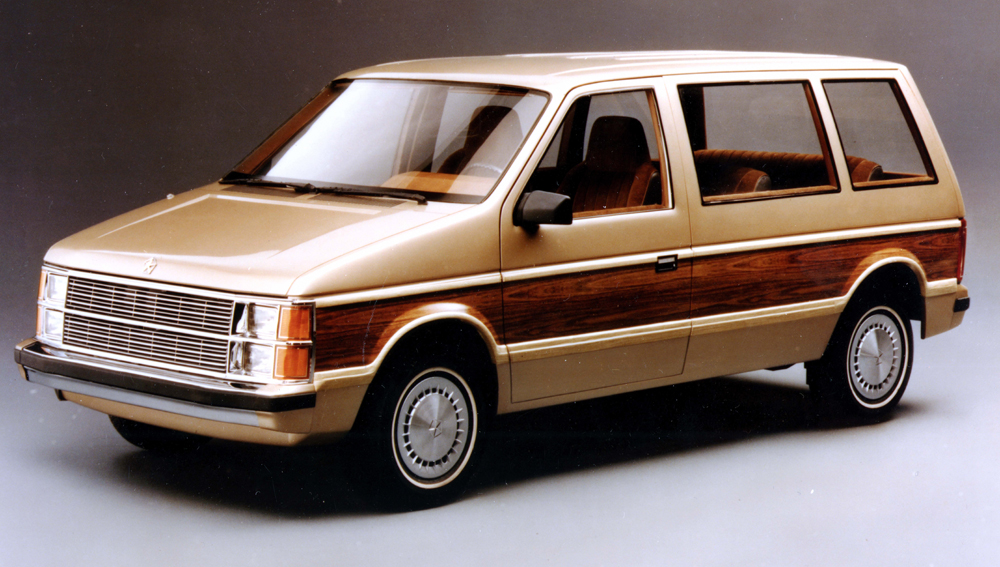
1983
The Plymouth Voyager Minivan debuts as a 1984 model, inventing a new market segment.
1987
Plymouth Sundance sub-compact is introduced.
1988
The popularity of the Plymouth Voyager minivan leads to the introduction of the Grand Voyager, a long-wheelbase version.
1989
The Plymouth Acclaim sedan is introduced as the eventual successor to the Reliant ‘K’ car.
1990
The Plymouth Laser Coupe is introduced.
1994
The all-new Plymouth Neon bows as a 1995 model, giving the brand a stylish, domestically made sub-compact with unprecedented interior room.
1995
A unique vehicle shopping concept called ‘Plymouth Place’ brings the showroom to shopping malls with touch screen kiosks and trained advisors.
1995
The Plymouth Breeze, a large compact sedan based on the Chrysler Cirrus and Dodge Stratus, is added to the Plymouth lineup as a 1996 model.
1996
The Plymouth Prowler roadster – the most aluminum-intensive car built in North America – debuts as a 1997 model.
2001
As brands are consolidated, the Plymouth division ends production.

You must be logged in to post a comment.